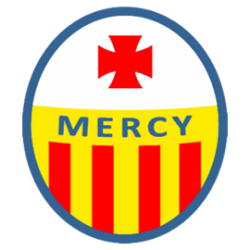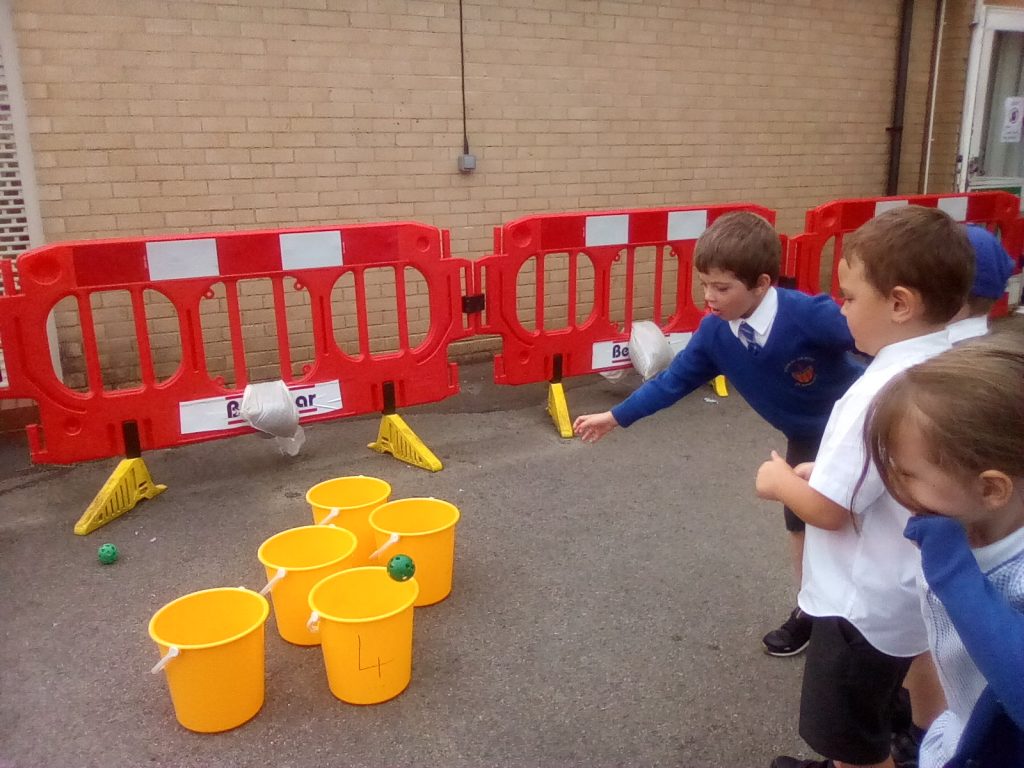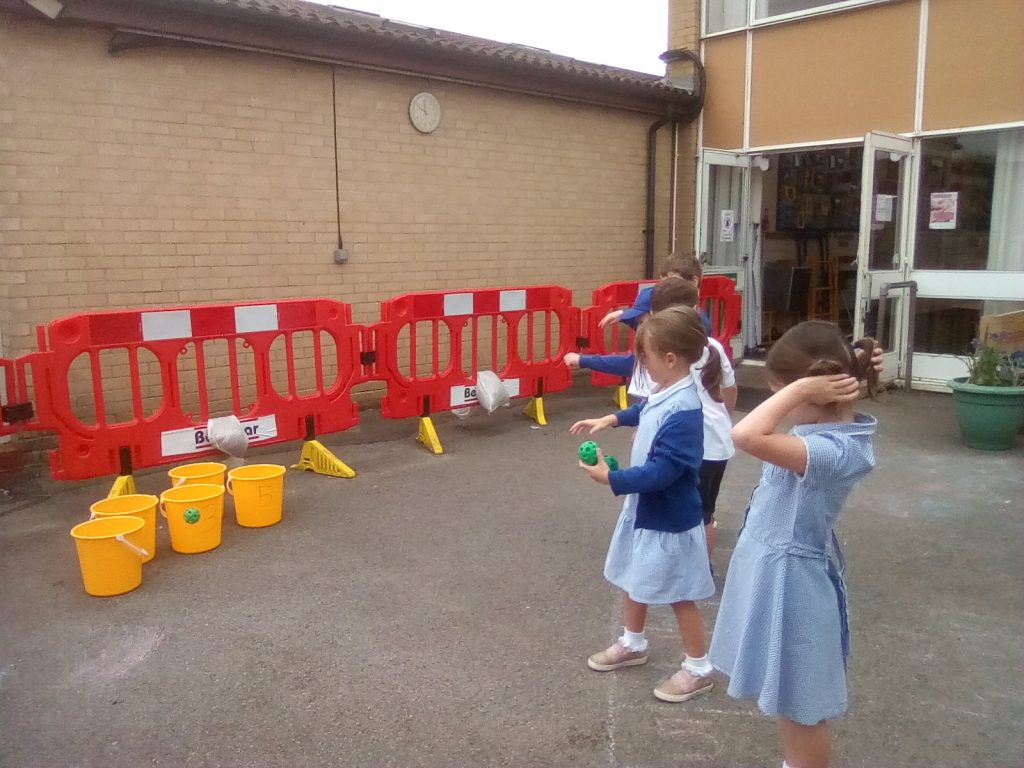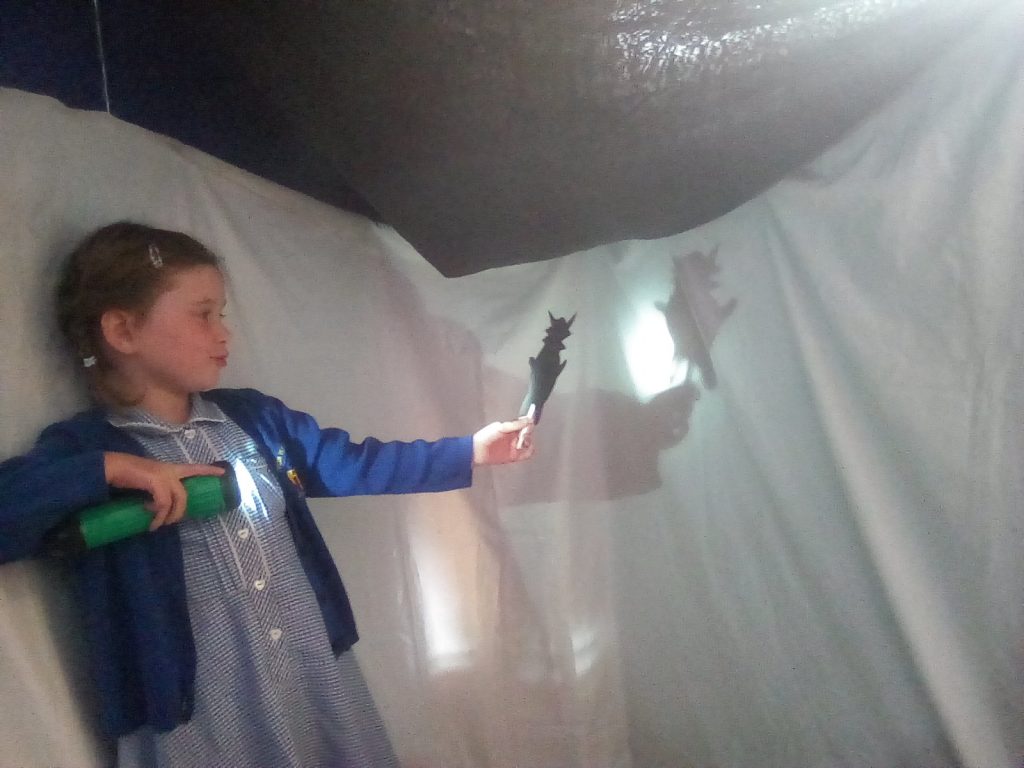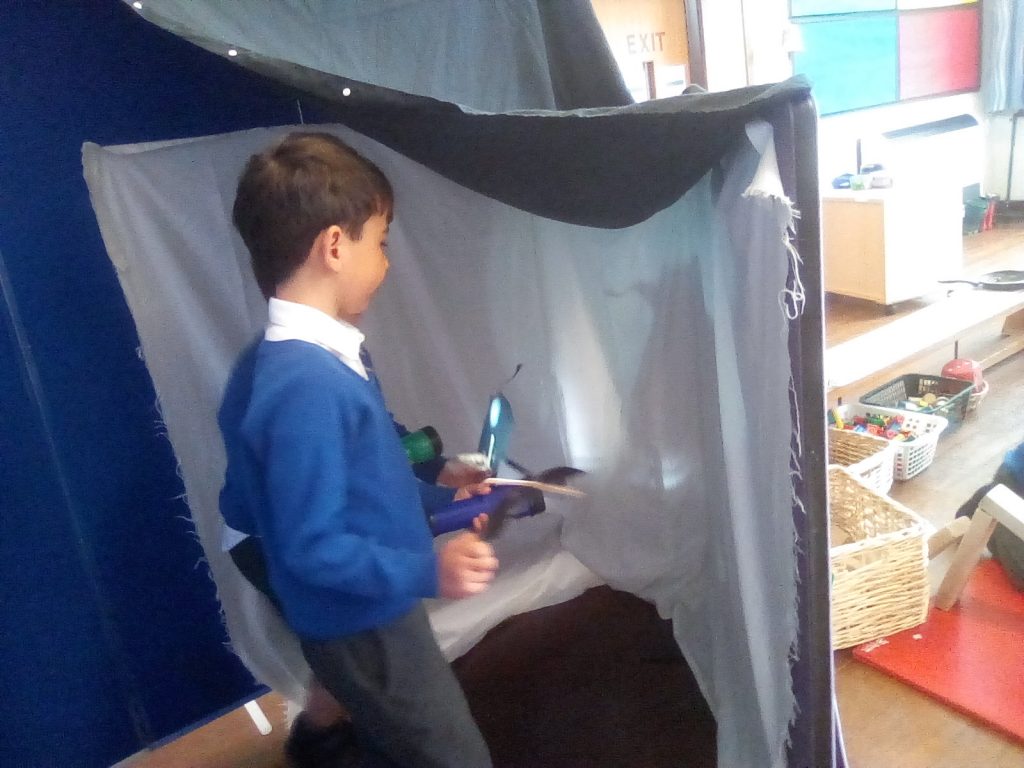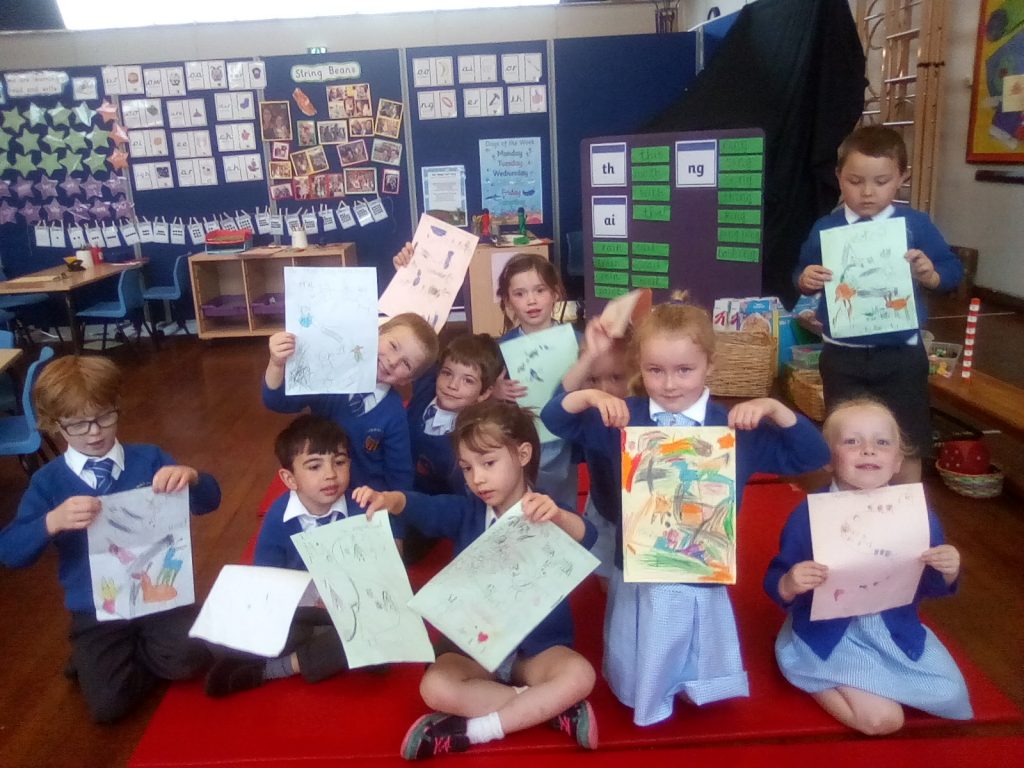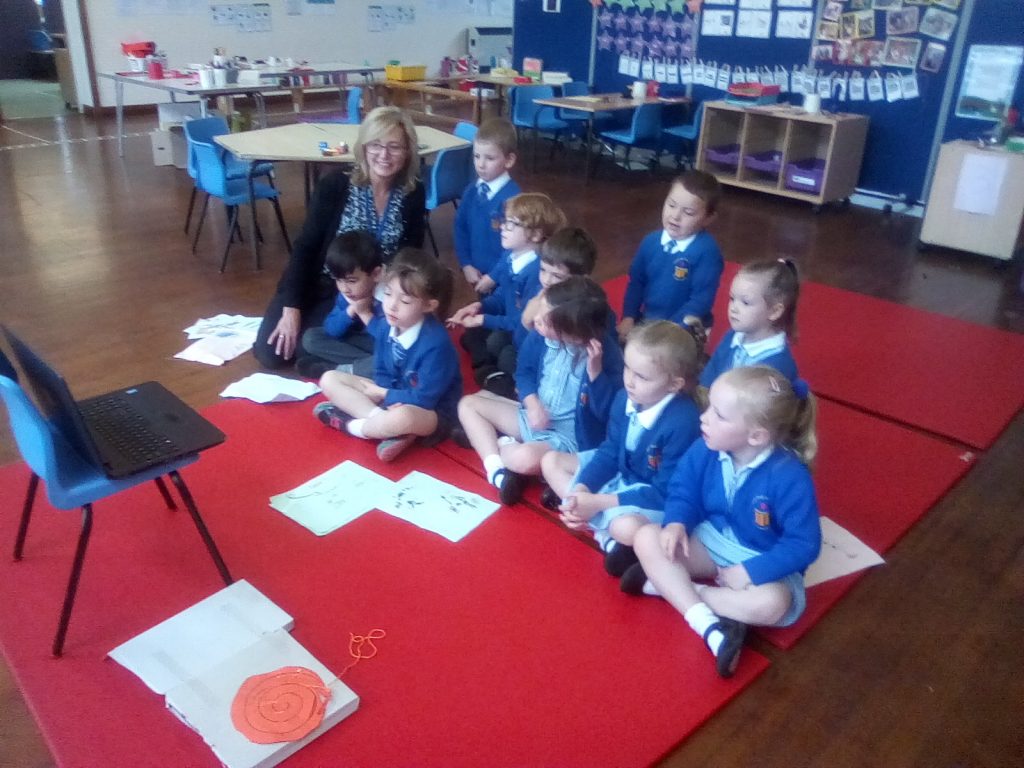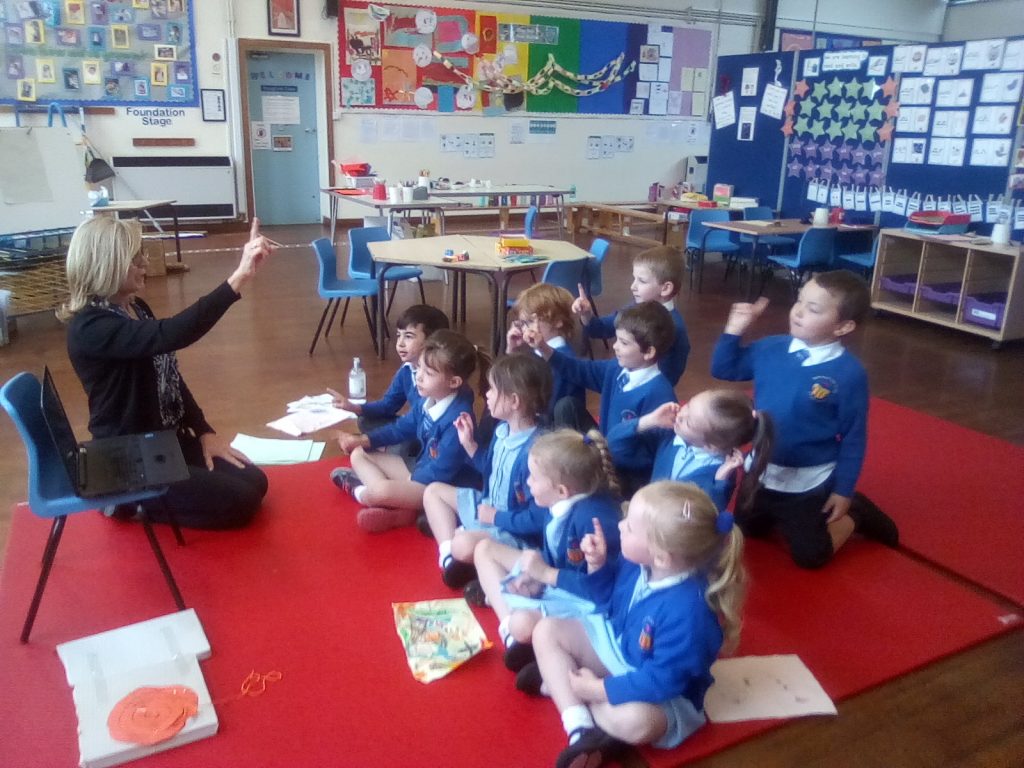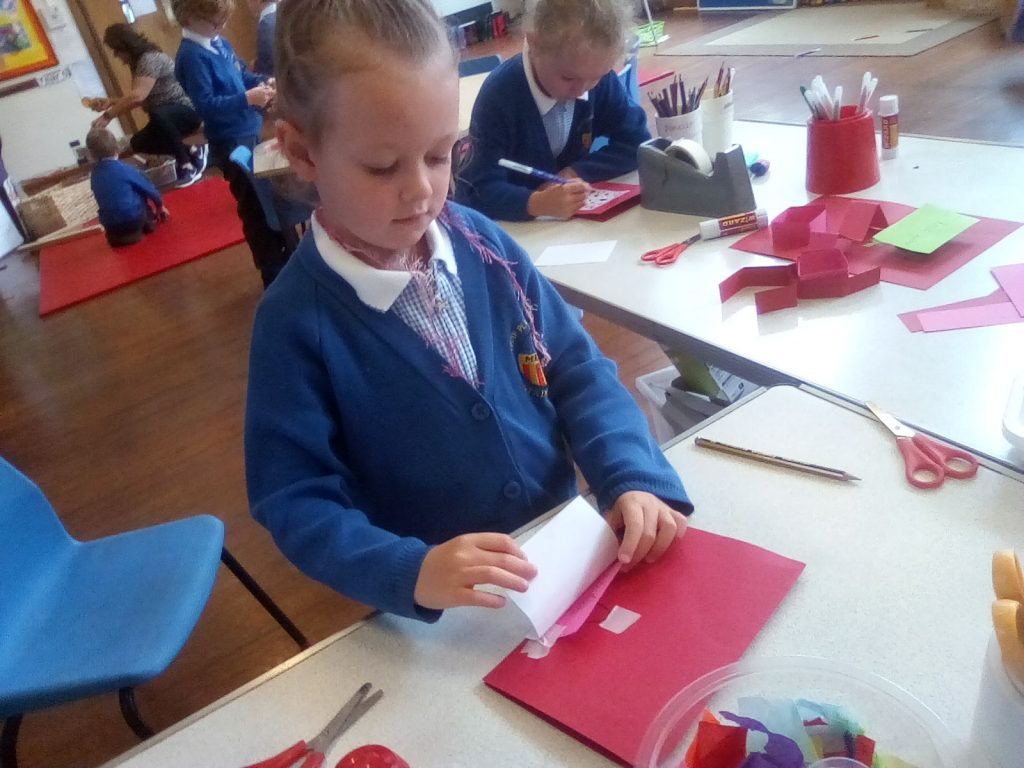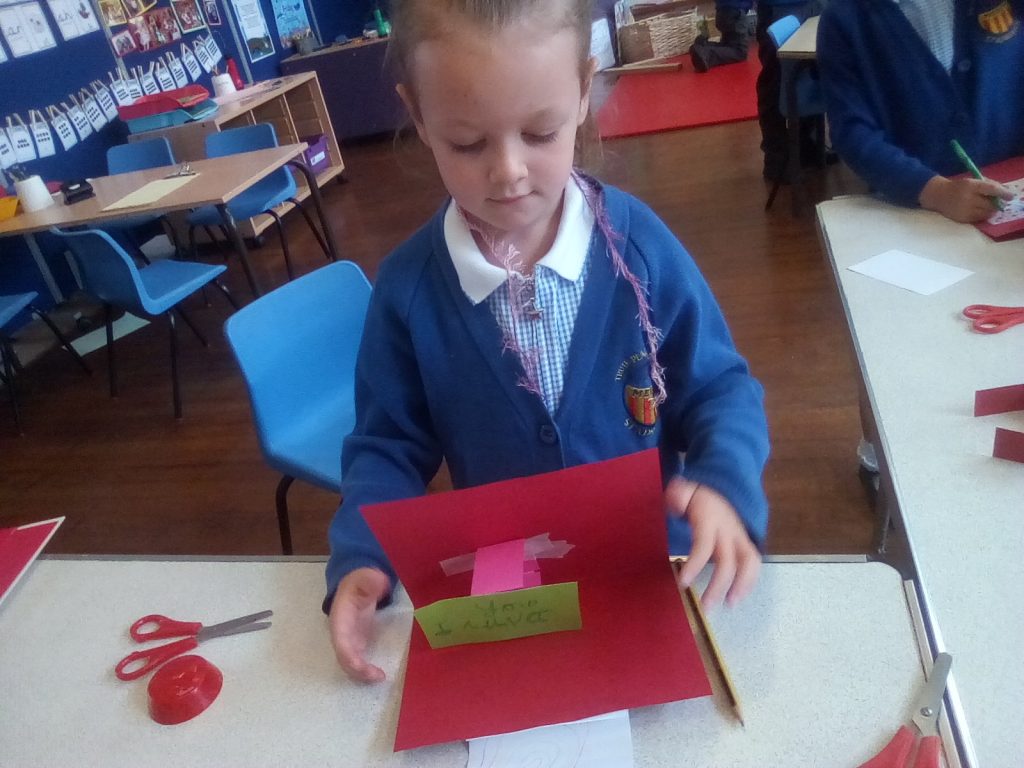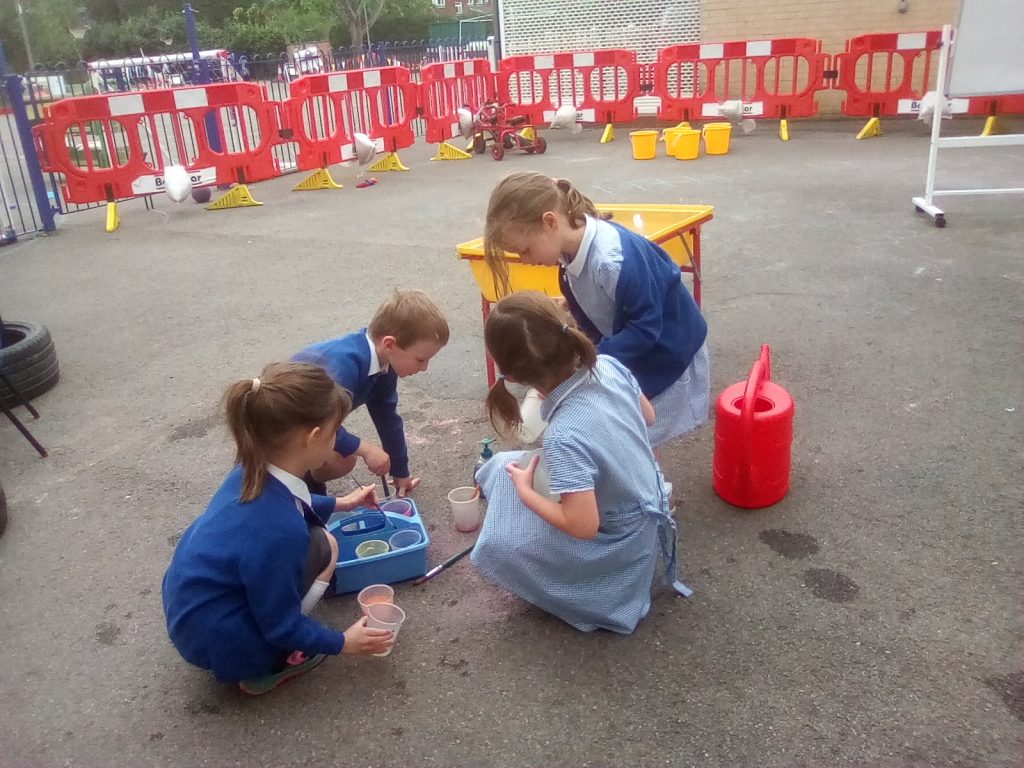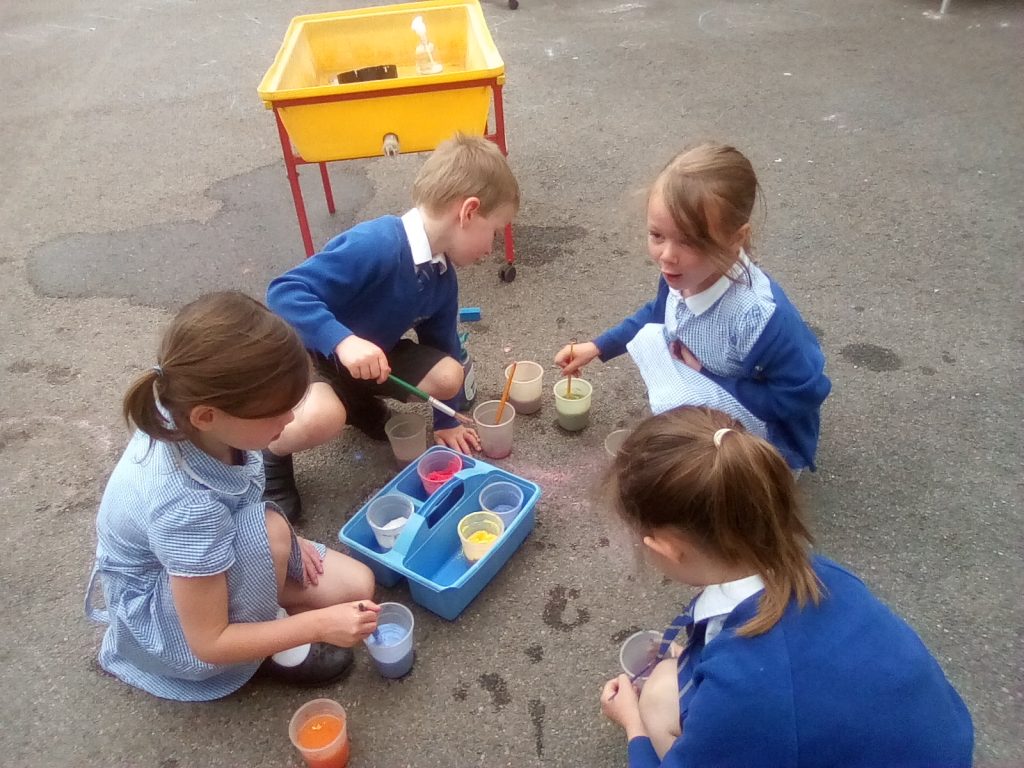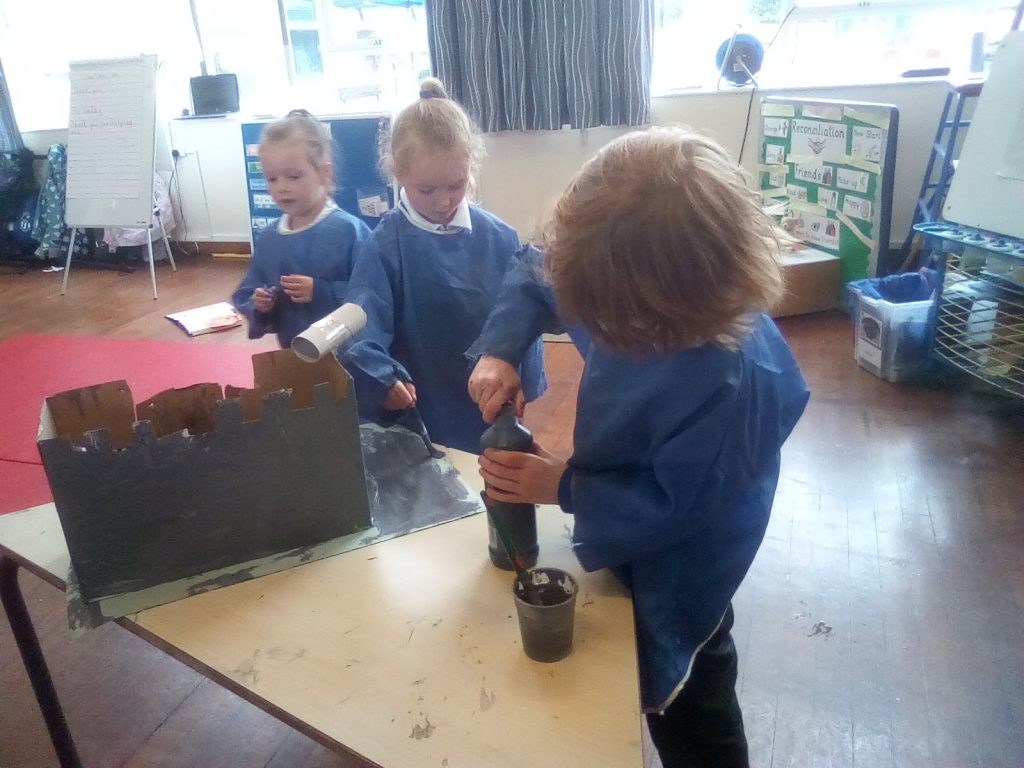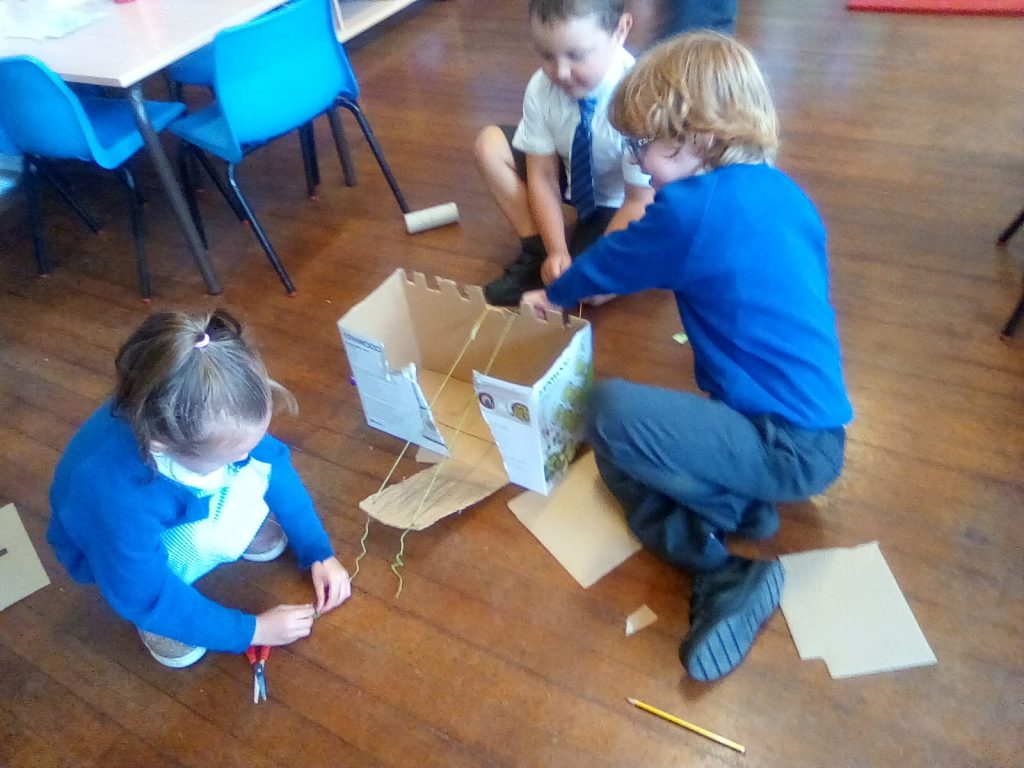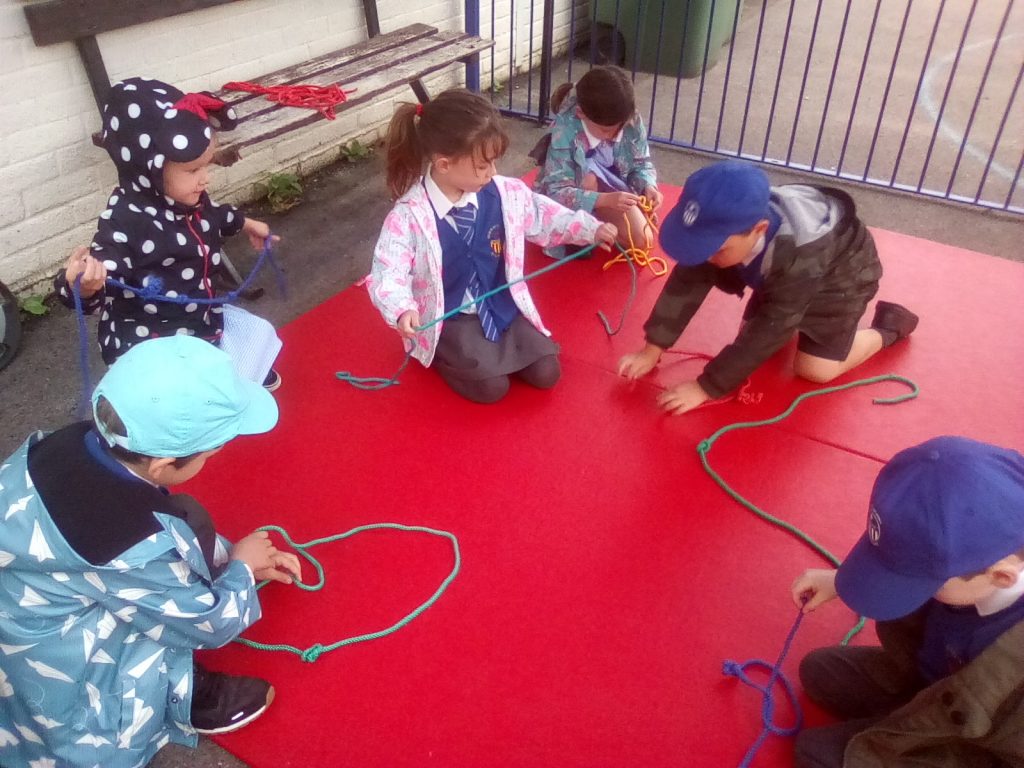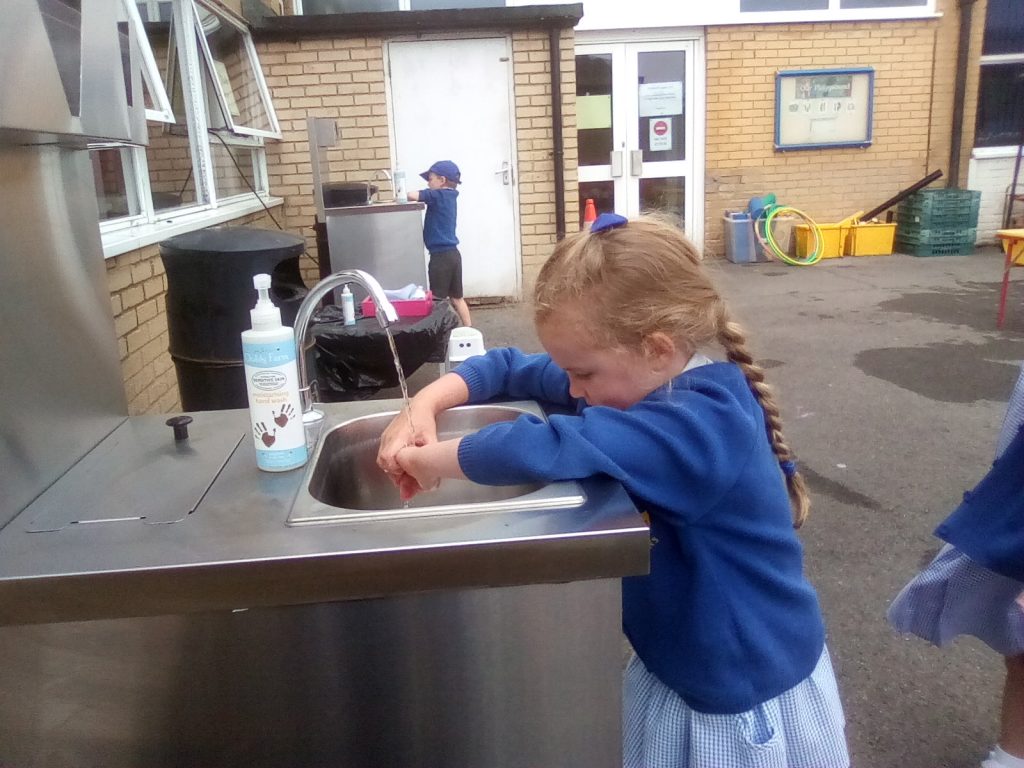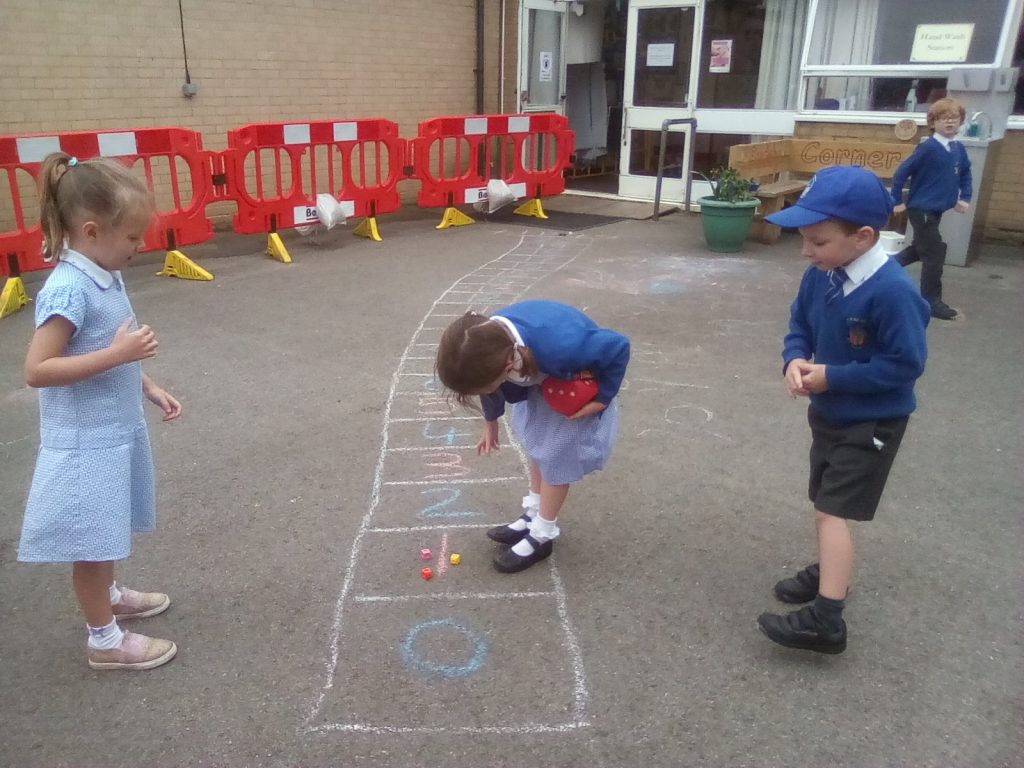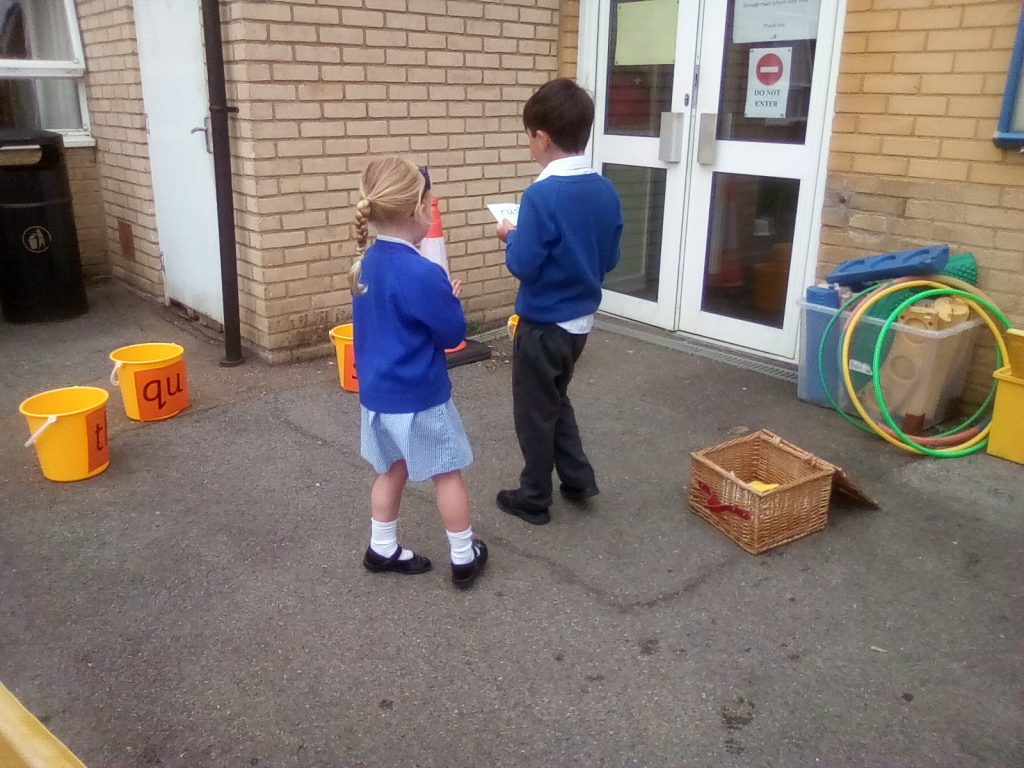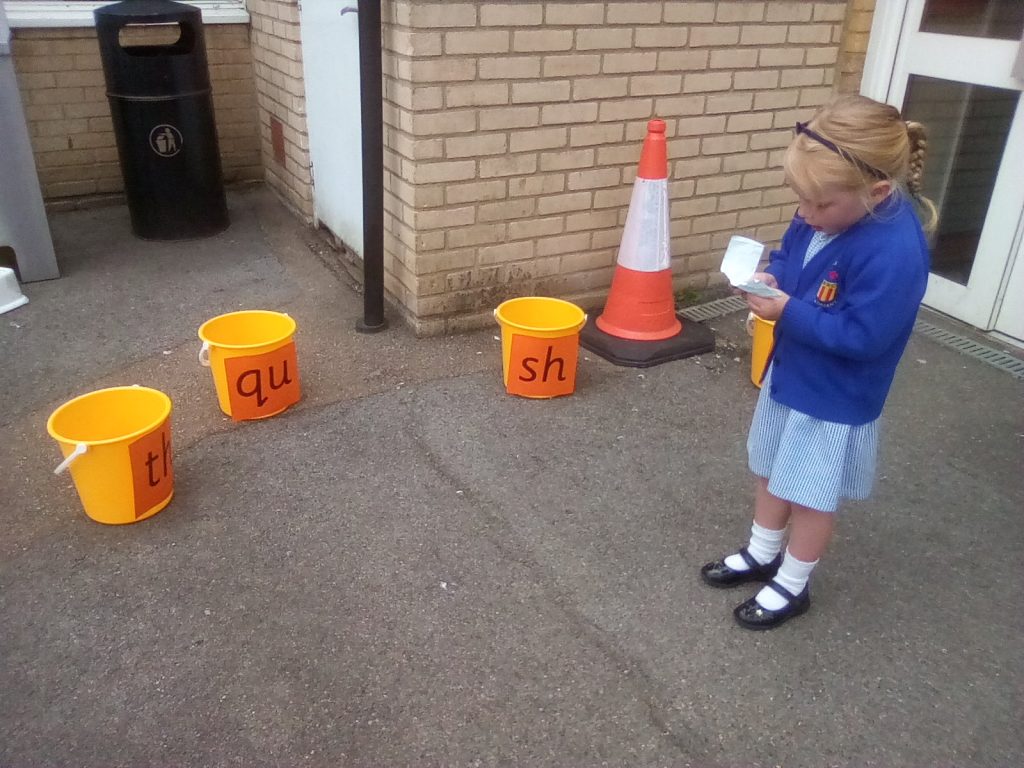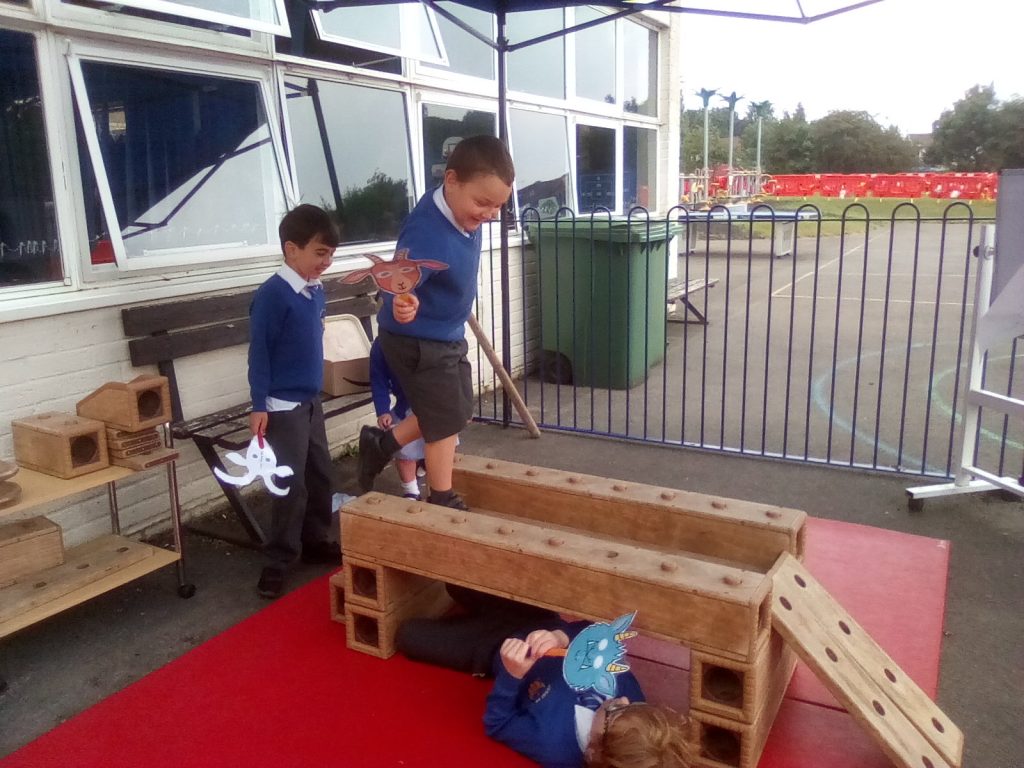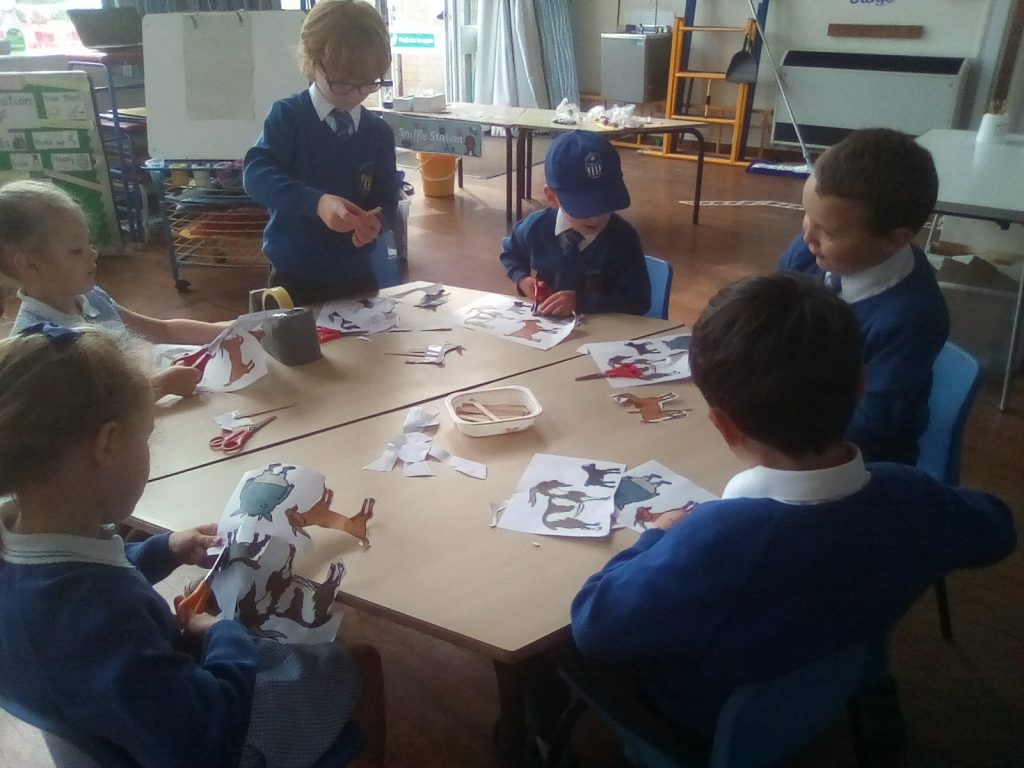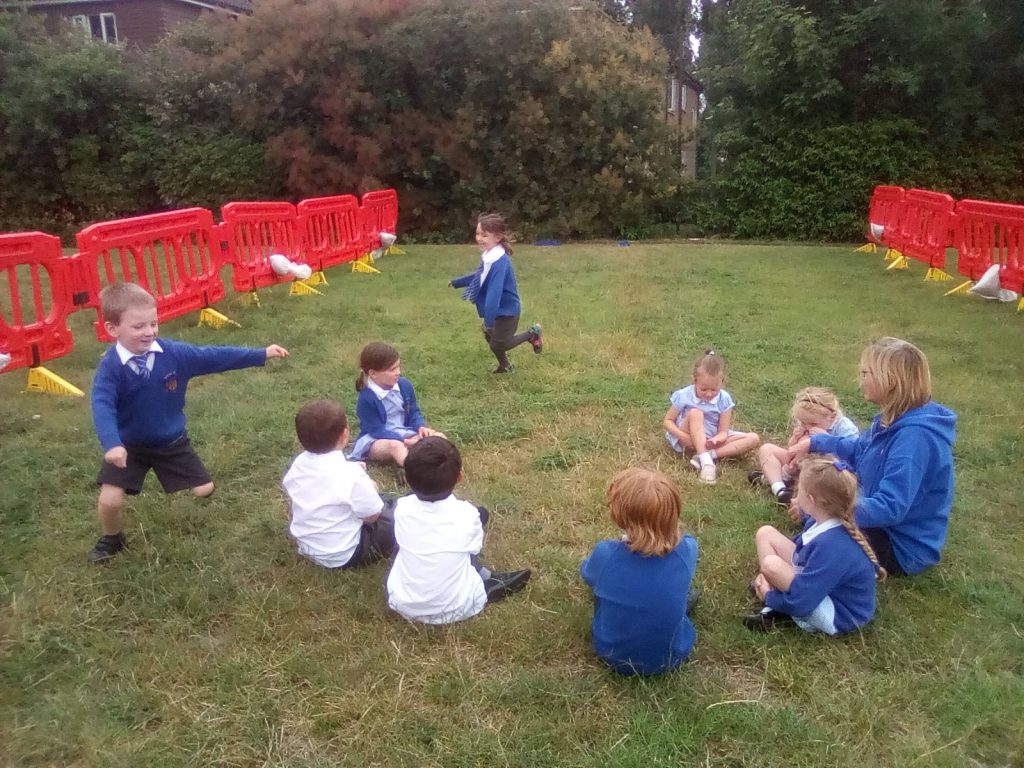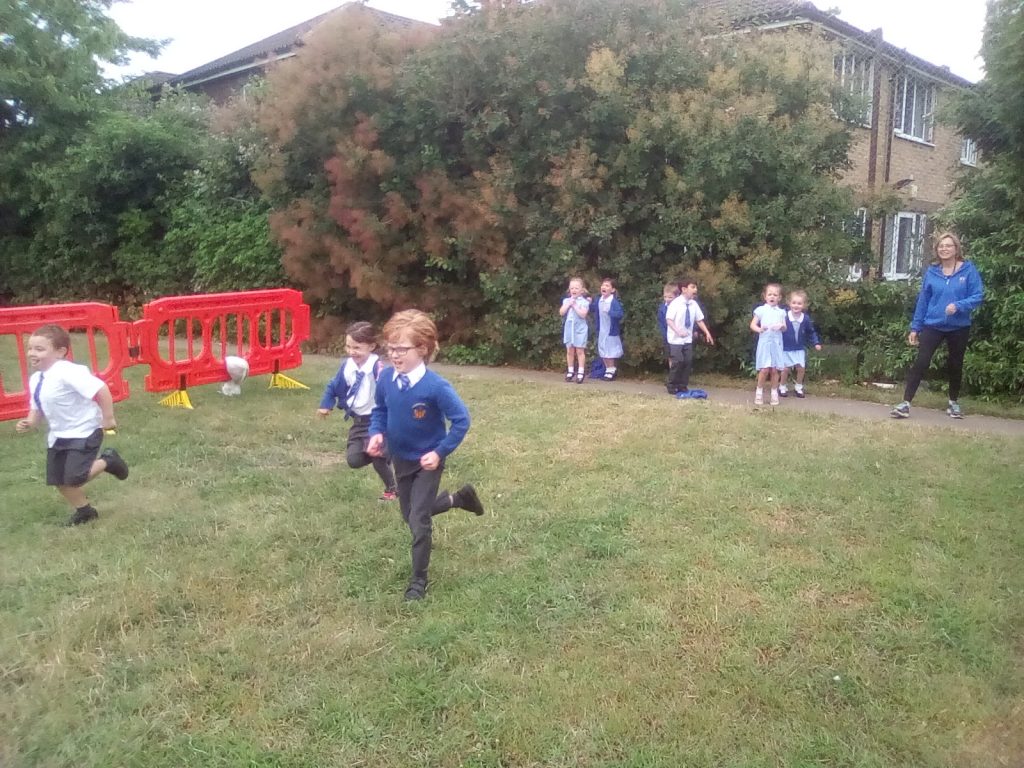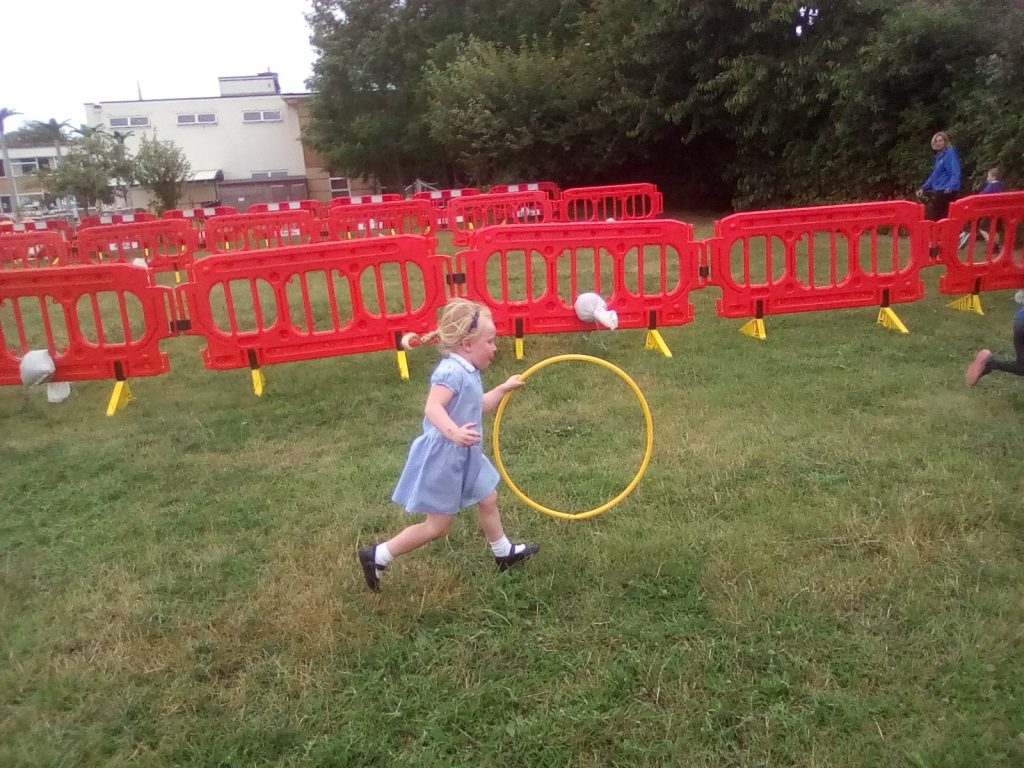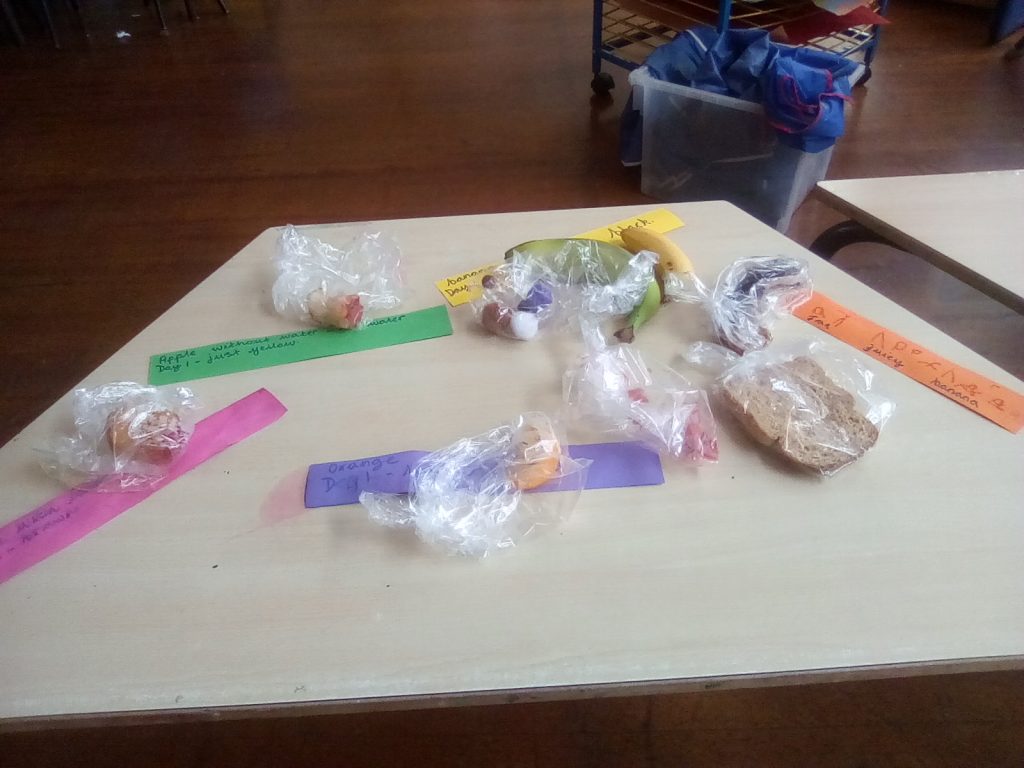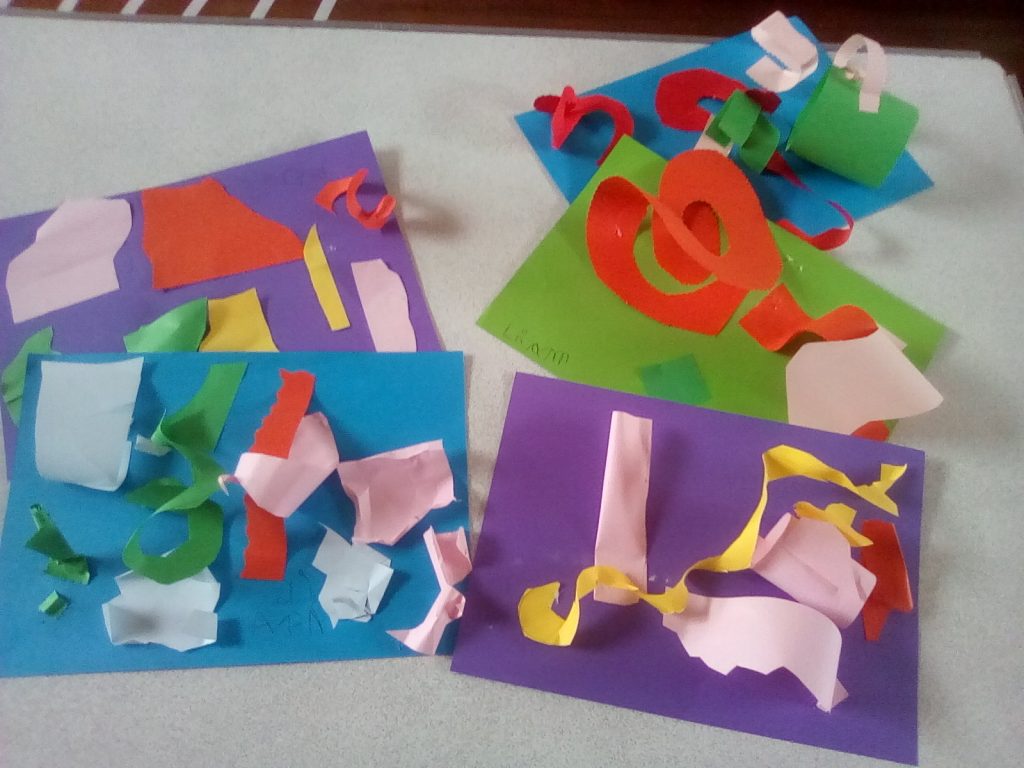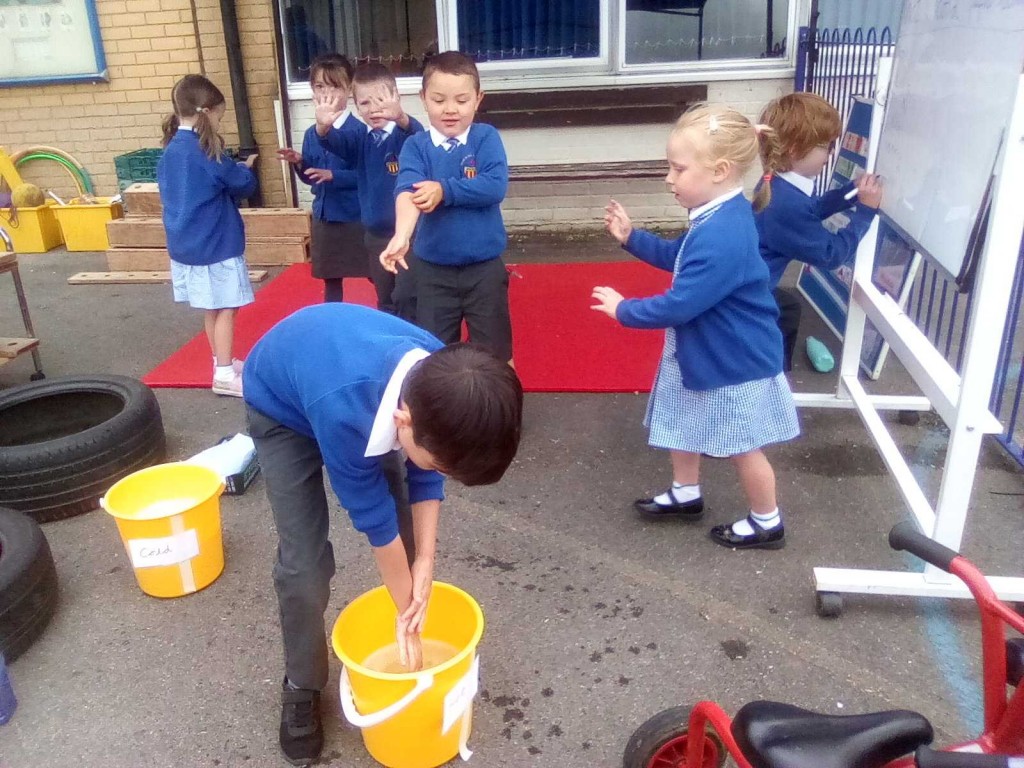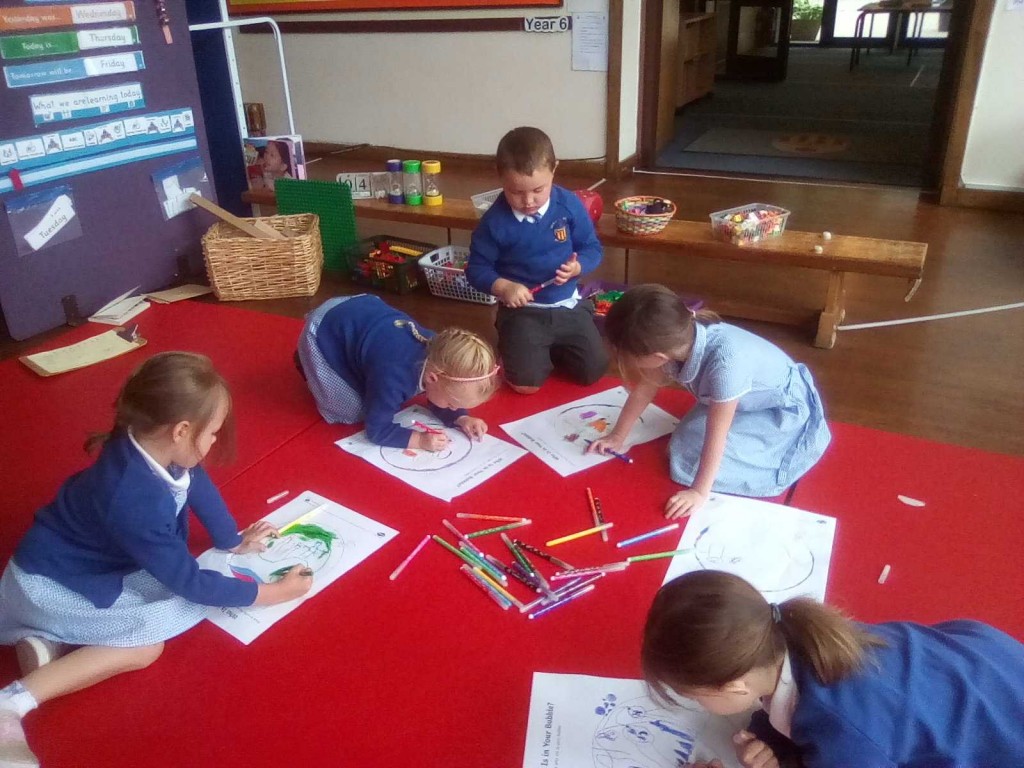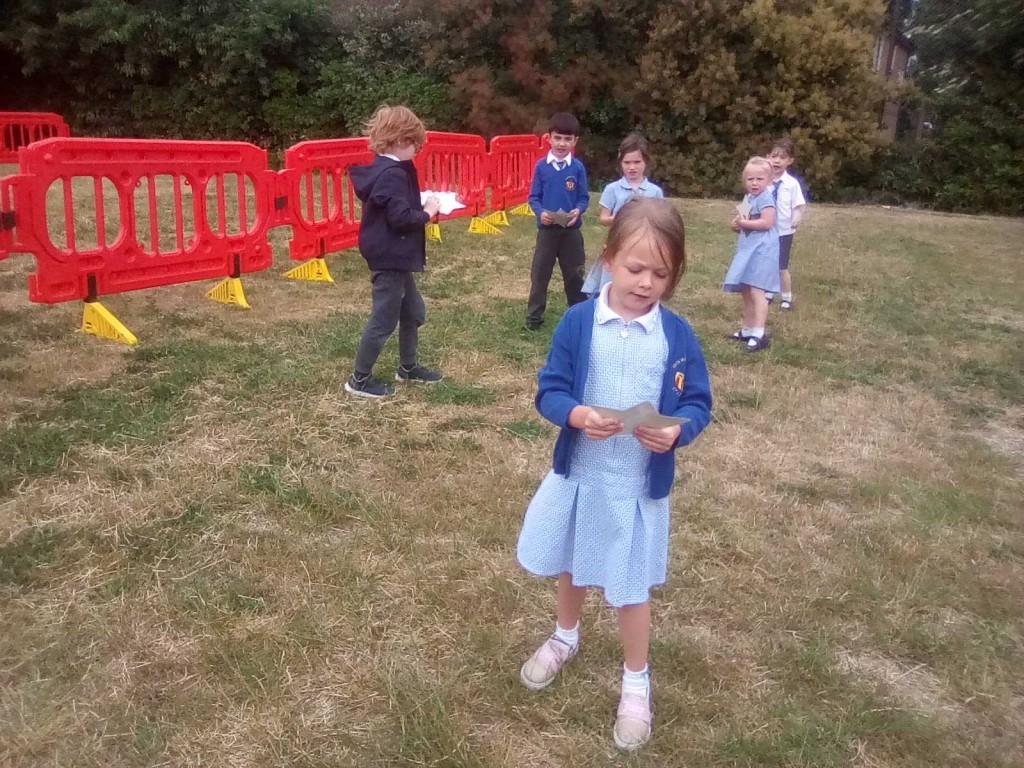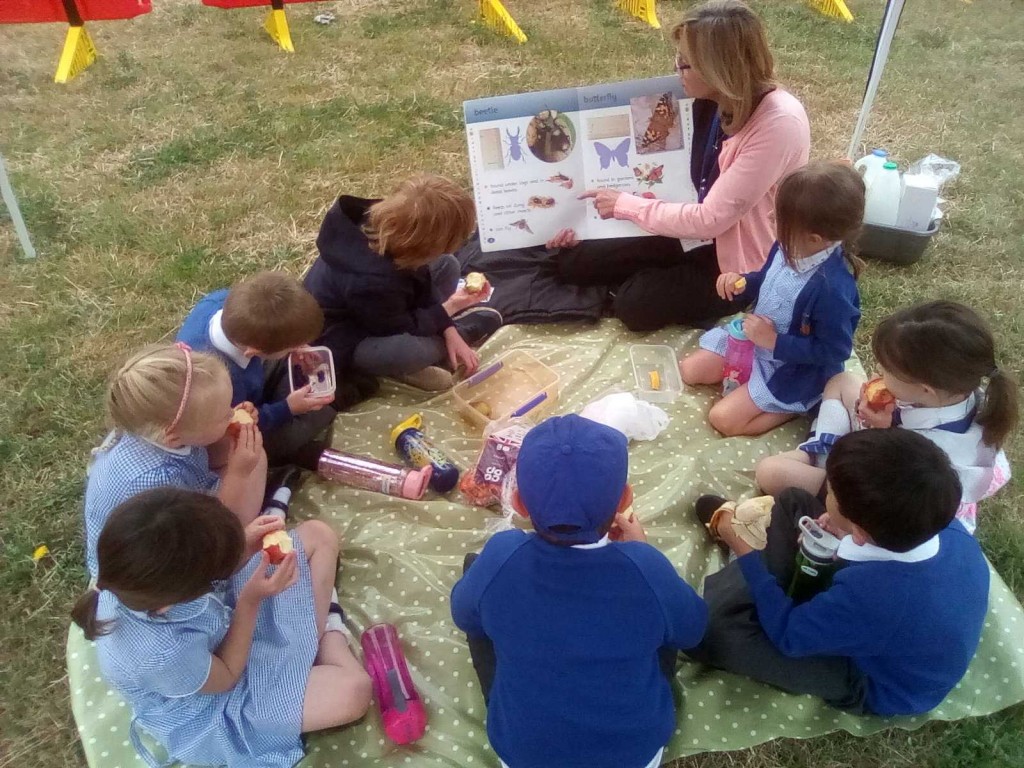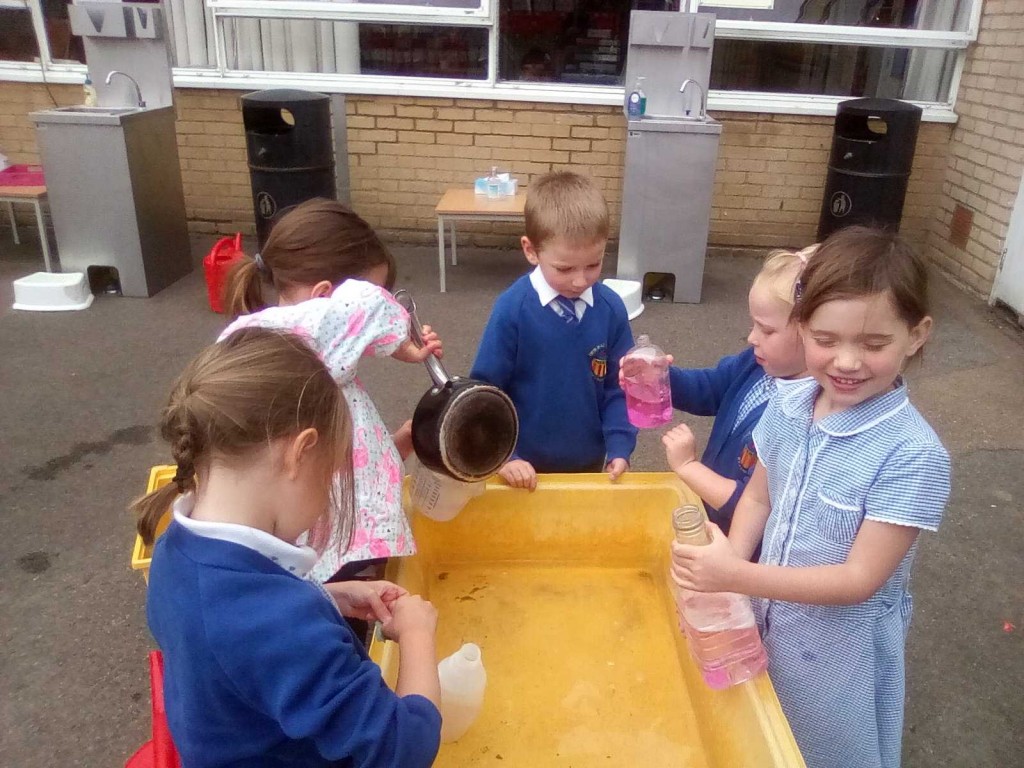Below are some ideas for home learning this week.
Talking
Help your child to uses talk to organise, sequence and clarify thinking, ideas, feelings and events.
Model how to think about things to your child by making a ‘running commentary’ as you undertake daily tasks together or when you play with your child. Think out loud. Ask yourself questions out loud and then answer them together. Then encourage your child by asking questions such as ‘Tell me what you’re doing/thinking?’ or ‘I wonder why you/they chose to do that..?’
Experimenting with different ways of moving
Make an obstacle course in a space using cushions, baskets, chairs, and encourage your child to move around it in different ways. For example, slithering, sliding, shuffling, wriggling and crawling.
Draw a hopscotch on the floor with your child using chalk or home-made paint (see textures below). Try different movements to play the game such as jumping with feet apart and then jumping with two feet together or hopping. How many jumps can your child do without losing balance and falling over? Do they need to hold their arms out to support their balance? Jump along the hopscotch using feet apart and together alternately.
Using simple tools and materials to effect changes in materials
Make a 3D picture together. Use a piece of A4 paper (or larger paper if available such as wallpaper from a roll) as a base and place it on a flat surface. Then do some ‘paper engineering’ with other pieces of paper. You can do this by curling strips of paper using child scissors, make snips in paper to create a fringe, curl paper around a pencil, make ‘snowflakes’ from folded paper, cut a circle to make a spiral. The possibilities are endless. When you have created your pieces of ‘paper engineering’, you can stick (or just place them) on the base paper to create a work of 3D art.
Continue a rhyming string
Play a game by sitting opposite each other on the floor. Roll a ball to each other and say a rhyming word as you roll the ball for example, bat, hat, cat, mat, pat, gat, splat, zat. (You can make up your own words.) Another example, peg, heg, meg, neg, spleg, weg, beg. This game can be played with several family members taking turns to roll the ball to each other.
Learning to sound out words for spelling
Play a version of ‘I spy’ with your child. Find a range of items that are familiar to your child and place them on a tray. Begin the game by saying, ‘I spy with my little eye, something that sounds like p-e-g’. Instead of saying the whole word, sound it out by saying one letter sound at a time. Remember to say the ‘soft sound’ for each letter (not adding an ‘-uh’ at the end, for example say a longer ‘ssssss’ rather than ‘s-uh’ – this makes blending the sounds simpler). Your child keeps the item if they guess correctly. They can then take their turn to ‘sound out’ an item to you. The one with the most at the end is the winner.
The following household items or toys will develop your child’s phonics knowledge: pot, pan, cup, peg, hat, pig, mug, car, boot, pen, cap, lid, doll, pen, box.
More challenging words: soap, ring, brush, egg-cup, book, cow, chicken, shell, ship, boot, coat, car, jar, fork, coin.
Recognising Numbers
Go on a number hunt around your home. Look at numbers on the front door, clock, microwave, television, phone, food packaging, toys, receipts and so on.
You could extend by looking for numbers during a local walk. Look at car number plates, road signs, drain covers, signage.
Use a ‘bingo card’ 0 – 20 to mark off numbers as your child spots them.
If your child, a family member or friend are celebrating a birthday you could make them a card, badge or a birthday crown with their age on. Talk about the number that is your child’s age. Have a hunt around your home for places where you can find that number, for example in books, on food packaging, the washing machine or the clock
Counting
Encourage your child to help prepare snacks with you. Give your child up to 10 food items, for example halves of grapes, blueberries, cut up banana, raisins. Tell them how many items they should have, for example, ‘You should have 8 pieces of fruit’, and ask them to check they have that number. This could be extended by giving your child too many or too few pieces of fruit and then asking them what needs to happen to make it right. Do they need to add more or take some away?
Subtraction
Learn this song with your child – 10 Fat Sausages Sizzling in a Pan
https://www.bbc.co.uk/teach/school-radio/nursery-rhymes-ten-fat-sausages/z6vh7nb
Encourage your child to use fingers or objects to calculate how many sausages left in the pan each time. You could even use a real frying pan and use suitable objects or paper cut outs to represent the sausages.
Solving mathematical problems
Invite your child to help you sort out socks before you put them away. Put the socks into pairs and lay the pairs on the floor, talking about the reasons that they are pairs (patterns, colours or size). Count how many you’ve got altogether. Count them in ones ‘1, 2, 3…’ then try counting in twos, ‘2, 4, 6, 8…’ Ask your child ‘how many socks have we got altogether?’ You can then repeat this game using shoes whilst tidying up the shoe rack.
Science experiments – looking at changes
Conduct a ‘scientific experiment’. Put an orange/slice of orange, lemon, onion, bread, apple into a ‘zip lock’ type or other tightly tied plastic bag. Leave it sealed over a number of days to watch the item decompose and make a book about what you see. Talk to your child about what is happening and the reasons why. Look closely at the items using a magnifying glass if one is available or use a phone camera to zoom in on the item.
You could compare this to items such as glass and plastic and highlight that they do not ever decompose, adding an element of environmental awareness to your child’s learning.
Creating different textures
Add texture to paint. Put some paint in a cup/beaker and add either sawdust, sand, oatmeal, porridge oats or anything that you have available that will change the texture of the paint. Talk to your child about what happens and encourage them to describe the changes to the texture. Invite your child to use different items such as spoons, large brushes, spoons or sticks to apply the textured paint on to paper. Make some floor paint using cornflour mixed with a little water and food colouring to use outside. Talk about the texture as your child explores and experiments painting with natural items including leaves, sticks, pebbles or twigs.
As always, it will be lovely to see your child’s learning on Tapestry. Wishing you all a fun week.
Nicola Palmer
















